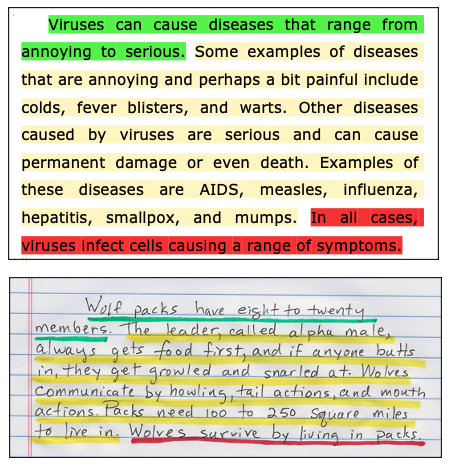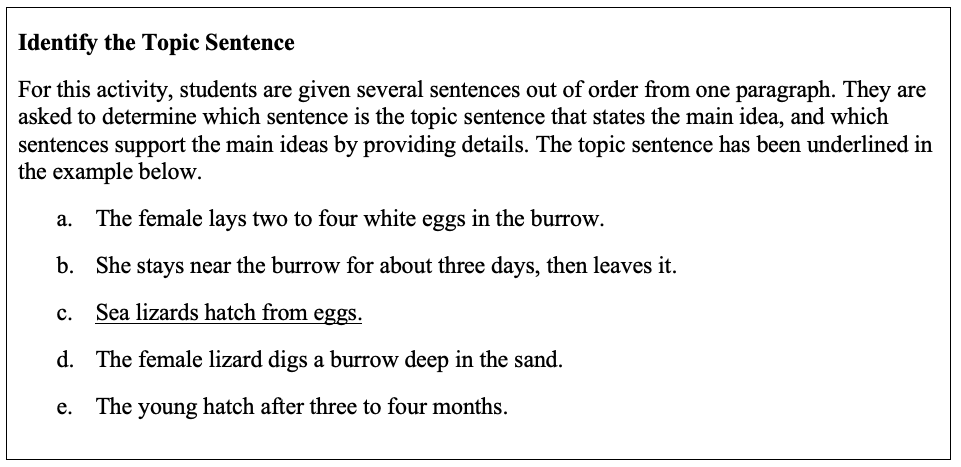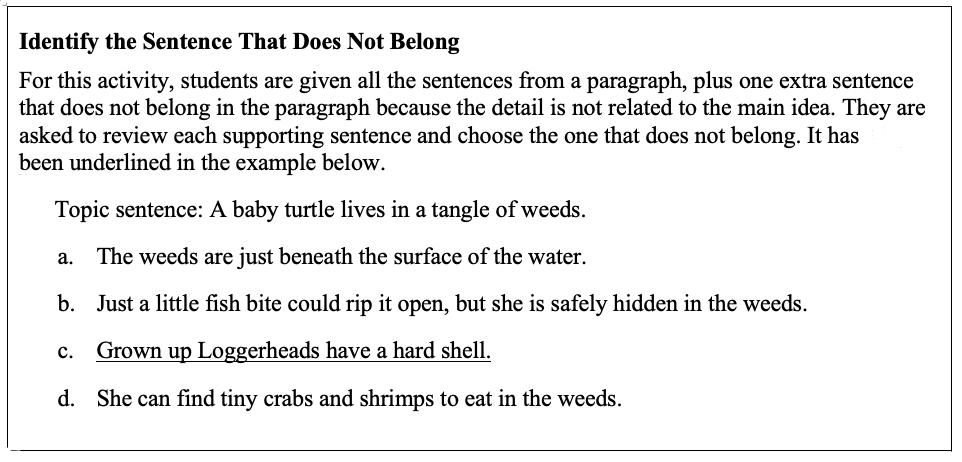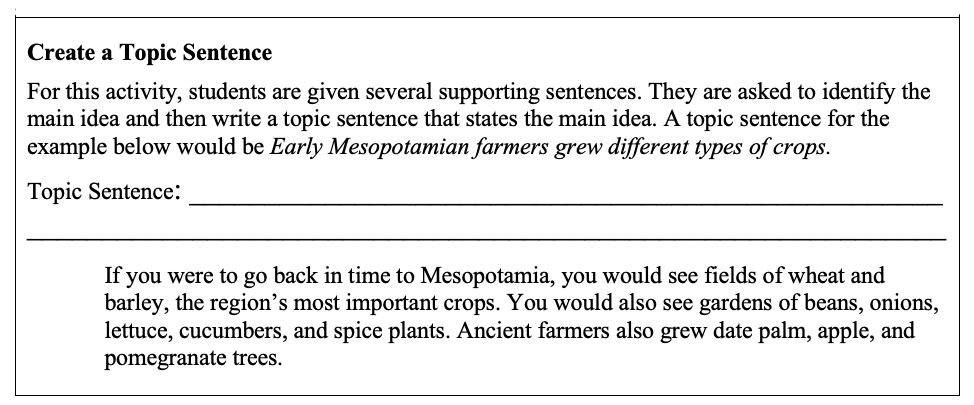The Mighty Paragraph

Sentences and paragraphs are the building blocks of writing. One by one, sentences combine ideas to make meaning. Sentences related to the same main idea are grouped into a paragraph. Then, one by one, paragraphs combine to become text. In 2020, I devoted two posts to sharing suggestions for developing sentence writing skills (see Part 1 and Part 2). This post will focus on paragraph structure.
Why do I call it the “mighty” paragraph? Well, without a solid understanding of what makes something a paragraph, many students do not comprehend as well as they could when reading or write as well as they should. While it is assumed that paragraphs are taught in the early elementary grades, there are many older students who still do not understand how this component of text structure works.
Teaching the Concept of a Paragraph
First, students must learn that, fundamentally, a paragraph is a group of sentences that are related to the same main idea. A short piece of text may be organized into just one or a few paragraphs. Longer pieces of text such as an article may have a larger number of paragraphs that are grouped into sections. Even longer texts (such as a textbook) may have a very large number of paragraphs organized into sections and then chapters. Regardless of text length, the purpose and structure of a paragraph remains the same! As the topic of expository text is developed, a writer will constantly shift main points related to that topic. Likewise, as information unfolds in narrative text, the author will constantly shift main events. An indent (or in some cases a double-spaced line) is an author’s way of signaling the reader that a shift is happening…. i.e., that the text is moving from one main idea to another.
Teaching Basic Paragraph Structure
Students benefit from explicit instruction about the basic parts of a paragraph, including the opportunity to analyze examples of well-written paragraphs. There are basically three types of sentences in a paragraph:
- A topic sentence:
- states the main idea of the paragraph
- is sometimes placed at the start of the paragraph to let the reader know up-front the gist of the paragraph, but may also be written in the middle or end of the paragraph
- sometimes the main idea is not stated as a topic sentence – the main idea is implied and the reader must infer it based on the information provided in the support sentences
- Support sentences:
- provide details related to the main idea
- the number of support sentences in a paragraph will vary
In the early elementary grades, young students are taught that a paragraph should end with a concluding sentence. However, in most multi-paragraph texts, while there often is a concluding statement for the whole writing piece, it is not necessary to have a concluding sentence for every paragraphs.
Color Coding to Emphasize Paragraph Structure
One technique that helps students focus on the structure of the paragraphs they read or write is color coding parts of a paragraph. For example, topic sentences are highlighted or underlined in green, supporting sentences in yellow, and concluding sentences in red.
First, the teacher shares examples of well-written paragraphs from mentor text. These samples can be individual paragraphs or a set of paragraphs from content related reading material. The teacher then uses discussion and think aloud to identify the parts of the paragraphs and color code them. Next, the teacher asks students to work collaboratively with peers to practice color coding additional sample paragraphs. Finally, students are asked to write and color code their own paragraphs. The first example below is from a textbook, the second is student writing.

Additional Activities to Practice Paragraph Structure
View the three additional kinds of activities that can be used to help students develop paragraph skills. The examples below are basic, but teachers can use more challenging paragraph samples selected from content reading material for practice.



As noted above, developing a stronger sense of paragraph structure supports reading comprehension. When students are aware of the purpose of paragraphs, they can be more meta-cognitive while reading as they attend to the “signal” the text provides that a new main idea is being presented. This is especially helpful when students are taking notes — they are better able to identify key main ideas and important, relevant details for their notes. For writing, the ability to write well-structured paragraphs goes a long way towards writing more organized writing pieces.
Related Resources:
For professional development related to writing instruction, see my Keys to Early Writing or Keys to Content Writing courses.
Additional Resources:
- “The Paragraph Hamburger” (Reading Rockets article)
- Earlier, 2019 blog post: “How to Teach Main Idea”
- Earlier, 2018 blog post: “Explicit Teaching of Note Taking Skills”
- “Paragraphs” (The University Writing Center)

 Joan Sedita is the founder of Keys to Literacy and author of the Keys to Literacy professional development programs. She is an experienced educator, nationally recognized speaker and teacher trainer. She has worked for over 35 years in the literacy education field and has presented to thousands of teachers and related professionals at schools, colleges, clinics, and professional conferences.
Joan Sedita is the founder of Keys to Literacy and author of the Keys to Literacy professional development programs. She is an experienced educator, nationally recognized speaker and teacher trainer. She has worked for over 35 years in the literacy education field and has presented to thousands of teachers and related professionals at schools, colleges, clinics, and professional conferences.
Thank you Joan! Your work is helping so many educators support our most vulnerable.
I like the color coding you add to your visuals for paragraph writing. I am adding color as much as possible to help with the retention of information. Thank you for all of these helpful ideas!
Interesting
I’m learning so much!
The topic sentence sets the stage for what the main idea of the paragraph will be.